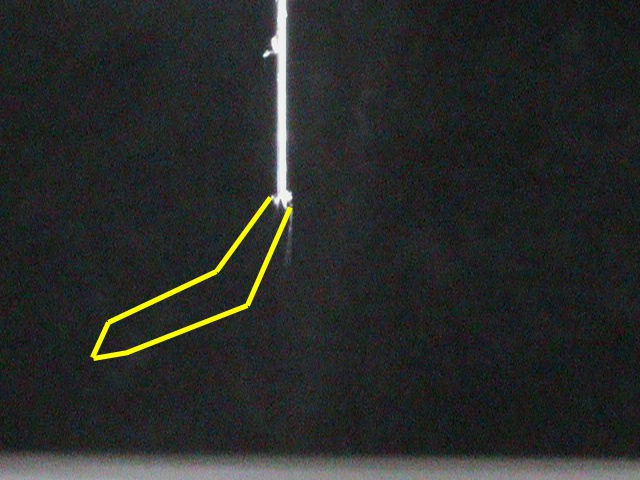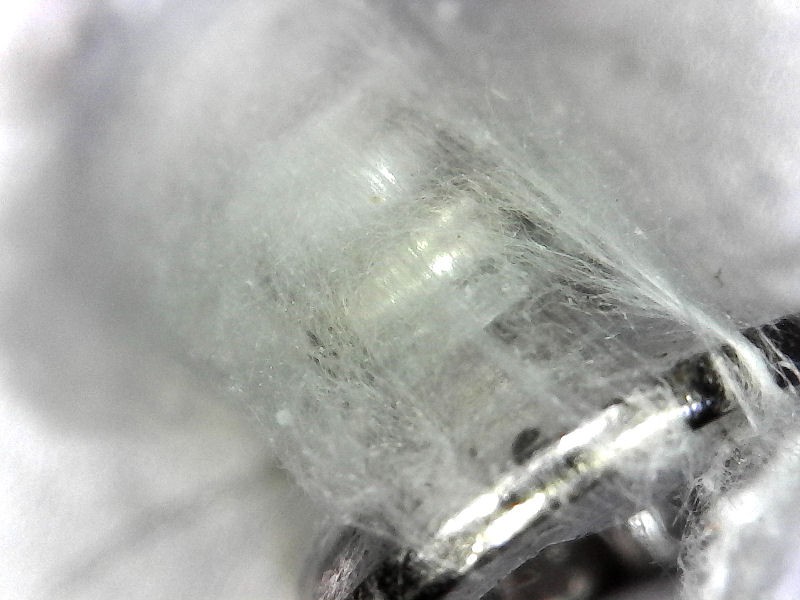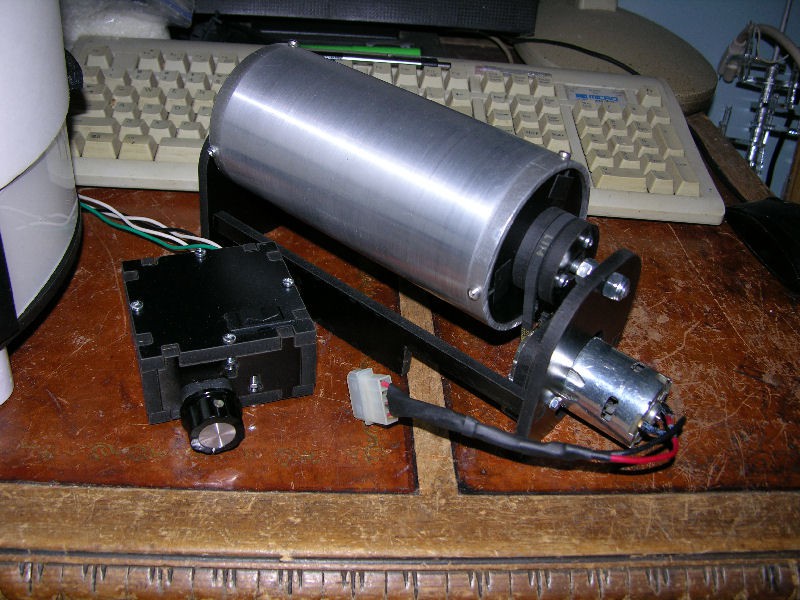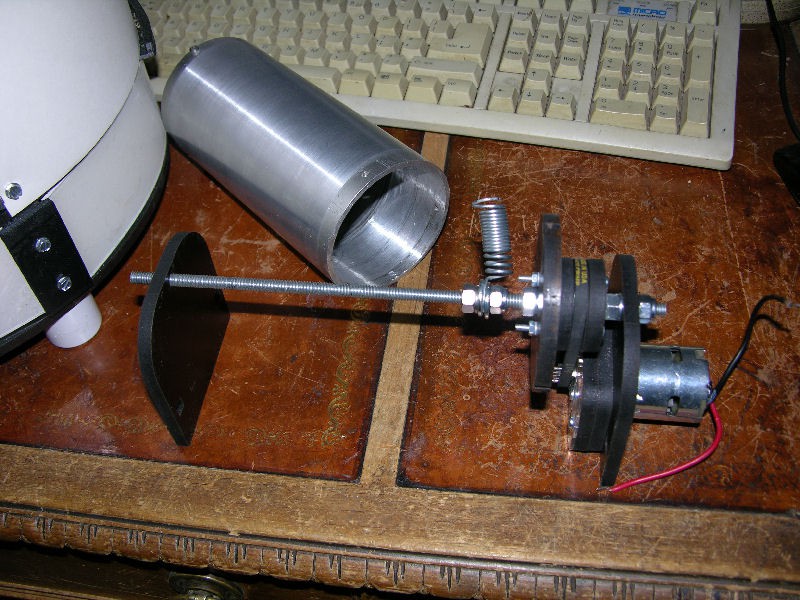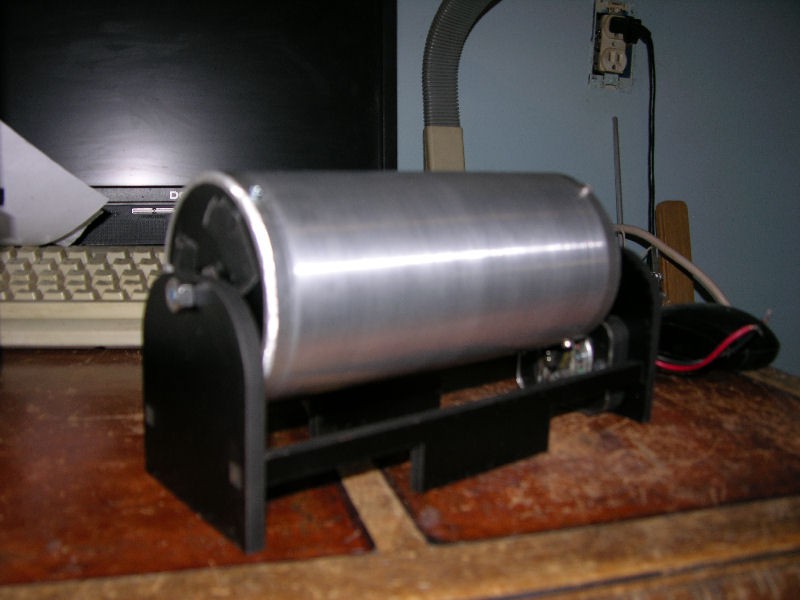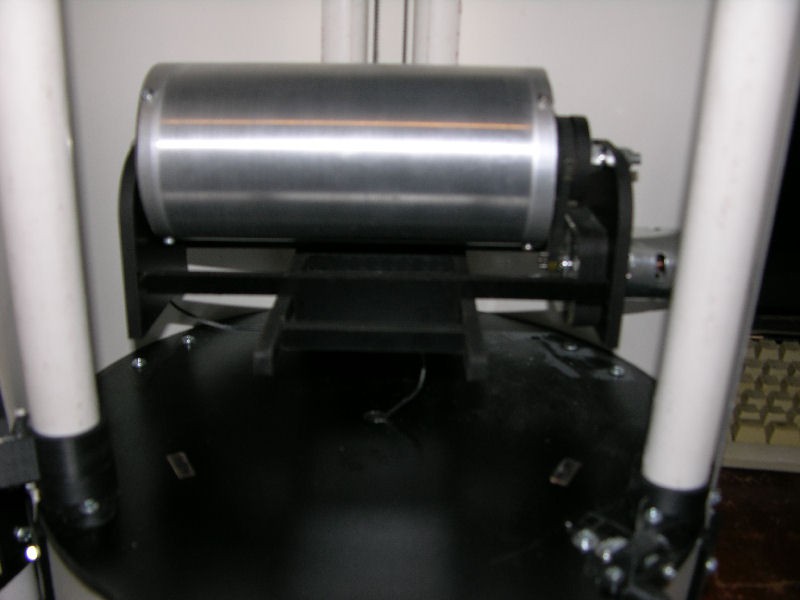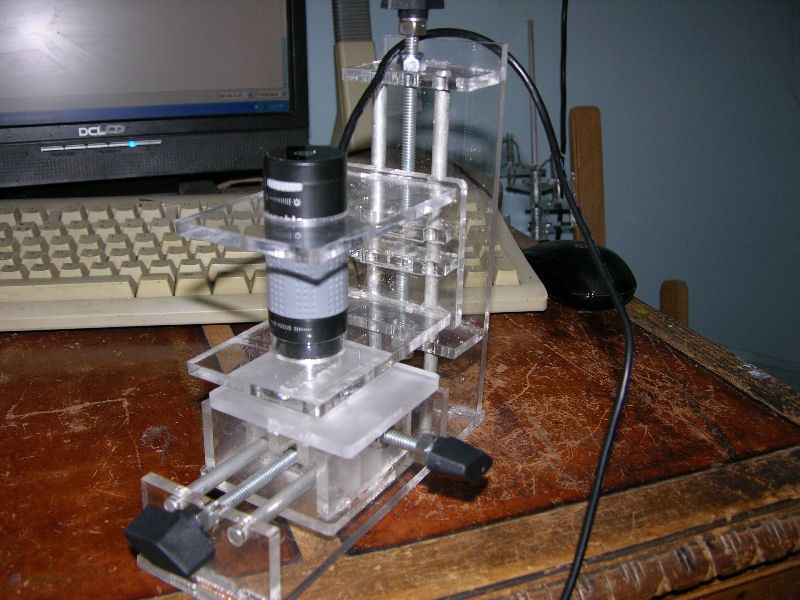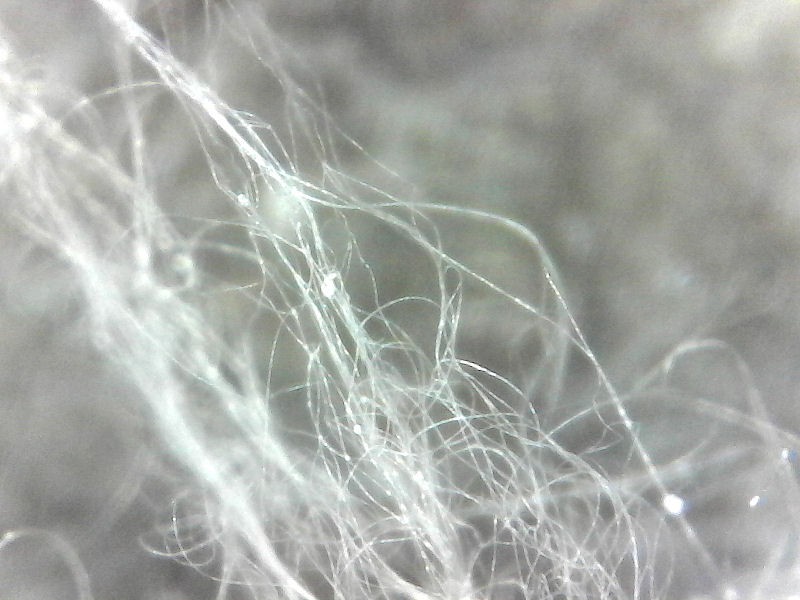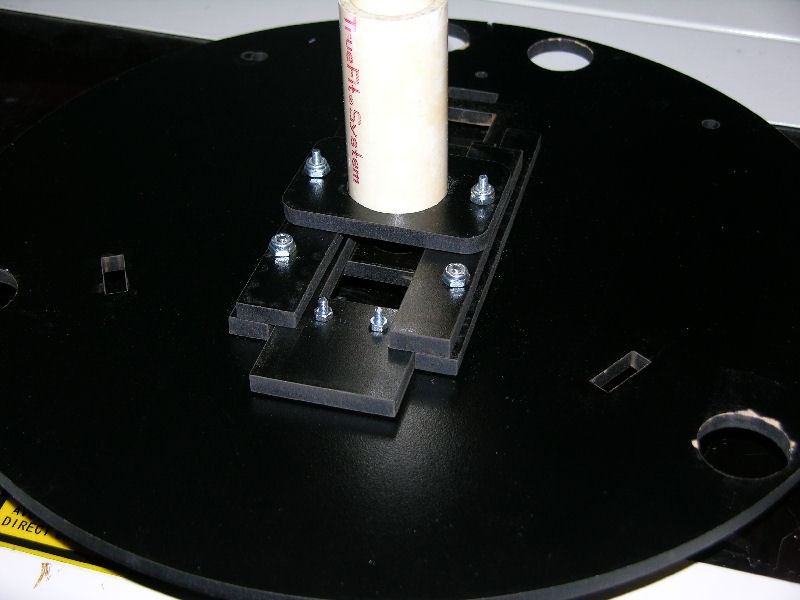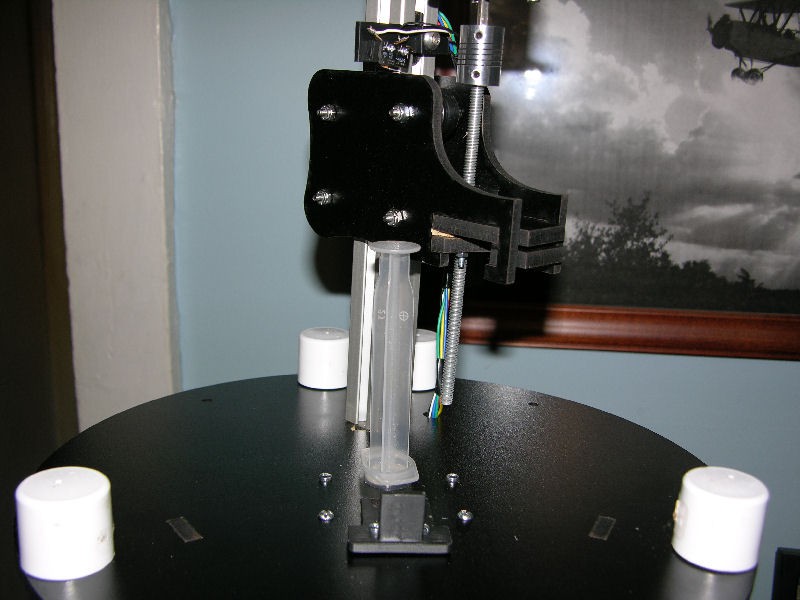-
Moving to a new project.
03/27/2017 at 21:11 • 0 commentsAfter much thought and encouragement I am entering the new version of this project into the HackaDay 2017 contest. Further progress logs will be posted in that new project.
PLEASE go over there and follow that project.
Thanks!
-
Rotary Speed Control Box, Testing.
03/23/2017 at 14:12 • 0 commentsI tossed together a box for the speed control for the rotary, and added plugs to the cabinet to plug every thing in nice and simple. Then it was time to test the rotary out.
Mixed results. For something slapped together in such a hurry out of things hanging around the shop, it works. That's the good news. The bad news is it gets too hot during a run. So more work needed there.
I got some smaller needles in the other day, and gave it a go with them These are 23G needles. Made a big difference! I'll have to do a bunch of runs to get the settings all down pat, but early results are certainly encouraging. Check out this photo:
![]()
It's hard to pick out, but inside the yellow lines is a long fiber being pulled. Keep in mind that the outside of that needle is .6mm, so you can see the fiber itself is pretty darn small. The best I've been able to catch under the microscope after a run with this setup comes in about .015 mm diameter.
I stuck a small screw on the plate during a run, and let it collect fibers for a few minutes. Of course I messed the fibers up with my fingers, but this is what it look like under the scope:
![]()
The head of that screw is 5 mm. It's the black part, of course. Check out the fiber diameter, and length. Some of the lengths, when I get everything dialed in just right, are stretching into 110-120 mm range. I haven't got a picture of one of those yet because they are so hard to see due to their small diameter that I seem to loose them between the machine and the scope. Lol.
So, where am I? I'm happy with the length and diameters I'm getting. Still need to work on collection methods and all that, but the main work is heading into hours testing out each of the four main variables and how they interact. Those are solution ratio, feed rate, high voltage level and distance between the plate and the emitter. I'm just going to have to slug it out and put in the time to run it in a organized and highly planned manner. I was planning to do that before now, but I wanted the rotary done first.
Taking all of this to MRRF2017 in a couple of days. See you there?
![]()
-
Making Rotary Attachment, Getting Ready For MRRF2017
03/17/2017 at 23:42 • 0 commentsWell aware that MRRF 2017 is only a week or so away, I'm getting the one piece of equipment I still really need for this thing: a rotary cylinder. It'll allow me to make long fibers instead of just mats. It's almost ready. Still need to do the speed control and straighten out the wiring to connect it to the electrospinner. But it works! :)
For now I'm using a spring inside to connect the center rod, which does not spin, with the cylinder, which does. I need that to ground the cylinder for the hV, of course. As it spins the fibers tend to grab and stick, then lay down around the cylinder. You wind up with longer 'strings' of fibers instead of just a unwoven mat.
It fits into the machine and sits on the table supports. A notch at the bottom keeps it in place on the supports.
This is what it looks like, inside and out.
![]()
![]()
![]()
A few days ago I tossed something together for the USB microscope. The thing works great, but at high magnification the stand that comes with it is all but unusable. So I made a better one. This is what that looks like. I'm sure I'll have both of these new doodads at MRRF, if you're coming. I hope you do!
![]()
-
Testing New Machine.
03/10/2017 at 21:22 • 0 commentsSo far I like this new machine. It's the one with the syringe up on top. Lot easier to get set up for a run. Finally got to the point of making a couple of runs on it, and they went well. Still a lot to learn on my part, but the machines doing okay.
First results are with ABS in a 15/85 ratio (by weight). After a bit of playing around with the feed rate, voltages and so on, I started to get fibers about 200mm long. Under the microscope I can see they are running around .004mm in diameter, with some down to about one quarter of that size. I learn something every time I make a run, and this time was no exception. Main lesson learned was I need a better collection method. By the time I get the fibers to the microscope they are in clumps, so that's the only pictures I have to show you, but that not the way they are in the machine.
What that really tells me is I need to get the spinning cylinder accessory built.
Another thing is I need to get some smaller needles, ASAP. I KNOW I can start to get the fiber size down as soon as I get some. Better get right on that, huh?
Well, here's a look at what it gave me. I'm not unhappy with any of it, just need to get on those couple of things I mentioned above...
![]()
-
Anyone going to MRRF 2017 this year? And a new syringe mount.
02/08/2017 at 20:10 • 0 commentsThe Midwest RepRap Festival 2017 is coming up soon, and I intend to have this machine there. Come on out and check it out. It's local to me, so how can I not go, right?
I'm making a couple of changes to a special version of the machine for MRRF 2017. It starts with a new way to do the syringe. Not sure how this is going to work out, but it'll be ready for a test in the next week or so.
What I'm doing is moving the syringe up on top of the machine. I'm doing that because the single biggest hassle in making a run on it is pissing around with the tubing that goes from the syringe tip to the emitter. You need to make sure you have the right type of tubing for the solvent you are running, getting it cut to the right length, and threading it into place. There's also the cost factor. It ain't much, but if we can get rid of it so much the better.
The syringe is going to be mounted on top of the machine, with the needle sticking right down into the chamber. No tubing at all used. :)
The syringe mount swings out of the way to load the syringe, and a mechanism locks both the syringe itself down firm and keeps the whole assembly in place during the run.
There's a few more pictures on the projects website at OpenESpin.com. Go to the last couple of pages on the porfolio/inprocessbuild tab to see them. More details as I get it polished off and run a few trials.
-
Changed name to OpenESpin and gave it a home.
01/29/2017 at 17:15 • 0 commentsIt's now project OpenESpin, and it has it's own website. You can check it out here. It'll be easier to expand and provide more information on it's own site. Hope you like it!
Go easy on me, it's new and I've got almost a whole week in putting it together. Never claimed I was a website designer. Lol.
-
Not sure what I can do with it, but it's interesting anyway...
11/29/2016 at 19:21 • 0 commentsJust ran across this and thought I'd post it. Going really, really small is where all the interesting stuff is happening. http://news.mit.edu/2016/carbon-nanotubes-water-solid-boiling-1128
-
Just and update on where we are.
09/15/2016 at 17:22 • 0 commentsBeen looking at modifying the files a bit in a way that could help anyone making one do it cheaper and with a greatly reduced part count, providing they have access to a laser cutter able to cut a complete 14 inch circle. A lot of the parts are there because the typical hobby laser can't cut that large.
Just my luck the mother board on my design machine took a crap, and I'm down until the replacement gets here. Shouldn't be long. (Gotta love that Amazon Prime fast and cheap shipping!)
Due to current financial constraints I can't do a whole lot with this right now, but I sure don't want to let it die! So I'll keep moving, slowly, as well as I can. I have to admit I was hoping to get in the finals, because that $1,000 would have gone a long way with this project. Being that I didn't things will go slow, but they will go on..
Started working on a website for the project, but until that motherboard is replaced, that's also on hold.
-
Looking to put together a team.
07/20/2016 at 16:34 • 0 commentsWith the end of the contest for us, it's time to look to the future of this project. It WILL go on! How fast and how far may depend on you!
I'm looking for people interested on helping take this forward. If interested please message me.
The end goal is the same, an open source electrospinning machine for makers. While I feel I have made great progress, it will take more than myself to take it as far as I know it can go.
It has been suggested several times that maybe this would make a great Kickstarter campaign, and that's one of the things the team would need to work on if we decide to go that way. Other skills helpful would be in variable output HV power supply design and just an interest in advancing amateur science in this area. Of course, just a need to explore new ground for makers is also most welcome! Web design and ability to put together great videos would also help.
There is still a lot of ground to cover here, including accessories that need to be designed, built and tested, as well as developing processes and procedures that can be replicated by almost anyone.
If you're interested, message me and we'll see if you are a good fit for this project, and possibly would make a great team member of a (possible) Kickstarter project.
-
Consumables Used.
07/11/2016 at 22:26 • 0 commentsLike most hobbies there are a few things that you'll need for electrospinning that wear out or are used up. I thought it was about time I talked about what they are.
To start with it kind of goes without saying that with a syringe pump, we're going to need some syringes. I'm using 20ml ones I got off of ebay for $14.50. Make sure you get the Luer lock ones. They give a real good seal and hold the tubing with no leaks.
Next comes the needles. I wasn't sure at the beginning what size would work best, so I just ordered some 18G ones. They work pretty well, but I've since learned that I'll want a variety by the time everything is said and done. I would expect that the viscosity will have an effect on the needle size we use for a given material. The 100 needles I got cost me $7.48.
To connect up those needles and the syringes we'll need some tubing. I'm using 1/8th" ID tubing. We can go to a smaller ID and waste less material that way, but you have to keep in mind the viscosity of the stuff your going to pump through it. Thicker stuff might strain the syringe pump, but I haven't tested it yet to see if it does.
Since we'll be pumping some solvents through it, we'll end up will several different kinds of tubing. For some of it I'm actually using some real cheap aquarium tubing. Cost me maybe $5.00. I also picked up some natural rubber tubing, and a few other kinds to test things out. Make sure the tubing you get will stand up to the solvent you're using!
With solvents, you're going to want some gloves. I'm mostly using some nitril ones, but I have some others to pick from. Again, you need to match the type of glove to the solvent you're working with. There are sources on the web that can tell you what works with what, but I'm planning on putting a list on the Web site I'll be setting up for this project soon. And while I'm on that subject, I plan to have a forum also, so everyone can share all that useful information as we get going.
I found some Luer lock fittings on Ebay and picked up some of each, male and female. They are made of Nylon, and I paid $8.75 for 25 of the male ones, and $8.25 for 25 of the female. So far the solvents I've been playing with haven't effected them at all, and I'm still using the first couple that I tried. I would imagine that if someone spent any extra cash they had just lying around and picked up some stainless steel fittings, well, they'd last just about forever. Can't really see where we'll be using any solvents that would degrade SS, but I could be wrong.
The last of the consumables is the solvents. Different materials will require different solvents. Again, I expect we'll start compiling a nice handy list of what solvent to use for what material you're working with. The only two solvents I've needed so far are acetone and some acrylic cement. I'll note that there are times when you might want some pure solvents, but a lot of the time if purity is not important you can buy products with the solvent in it off the shelf at a store near you. Paint strippers come to mind, and there are others. ALWAYS FOLLOW THE SAFETY WARNINGS when preparing your materials for electrospinning. It's not worth your health to get in a hurry and skip the safety precautions. Just do it right, okay?
Electrospinning Machine
Bring an open source electrospinning machine to the hobbyist level. Made with easily sourced and inexpensive materials.
 Douglas Miller
Douglas Miller